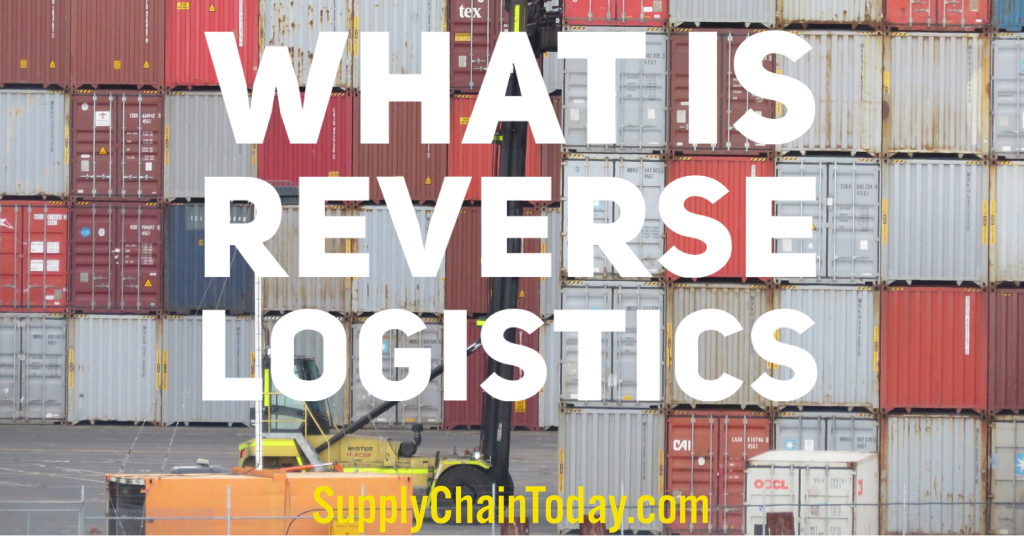Reverse logistics refers to the process of managing the return or movement of goods and materials from their point of use or consumption, to the point of origin, or a different point in the supply chain. This can include activities such as the return of defective or unwanted products, the recall of products, the processing of warranty claims, the disposal of products at the end of their useful life, and the recovery of materials for reuse or recycling.
Reverse logistics can be a complex and costly process, as it involves coordinating the movement of goods and materials in the opposite direction of the traditional supply chain flow. It also requires the tracking and management of returned goods, as well as the integration of reverse logistics activities with the forward logistics processes.
Effective reverse logistics management can help companies reduce costs, improve customer satisfaction, and minimize their environmental impact. It can also provide opportunities for companies to recover value from returned or end-of-life products through the reuse or recycling of materials.
Pros and Cons of Reverse Logistics
Here are some pros and cons of reverse logistics:
Pros:
- Reduced costs: By managing the return of defective or unwanted products and the recovery of materials for reuse or recycling, companies can save on the cost of disposing of these products and reduce their overall waste.
- Improved customer satisfaction: Reverse logistics can help companies handle customer returns and complaints efficiently, which can improve customer satisfaction and loyalty.
- Increased efficiency: Effective reverse logistics management can help companies streamline their operations and reduce the number of steps in the supply chain, leading to increased efficiency and cost savings.
- Environmental benefits: Reverse logistics can help reduce the environmental impact of a company’s operations by facilitating the reuse or recycling of materials, rather than disposing of them in landfills.
Cons:
- Complexity: Reverse logistics can be complex and costly, as it involves coordinating the movement of goods and materials in the opposite direction of the traditional supply chain flow.
- Additional costs: Reverse logistics can involve additional costs, such as the cost of handling returns, processing warranty claims, and disposing of products at the end of their useful life.
- Inefficient processes: If reverse logistics processes are not well-managed, they can be inefficient and lead to increased costs and customer dissatisfaction.
- Limited value recovery: In some cases, it may not be possible to recover value from returned or end-of-life products, leading to a net loss for the company.
Cost Savings: Reverse Logistics
There are several ways in which reverse logistics can lead to cost savings for companies:
- Reduced disposal costs: By managing the return of defective or unwanted products and the recovery of materials for reuse or recycling, companies can save on the cost of disposing of these products in landfills or incinerators.
- Reduced inventory costs: Effective reverse logistics management can help companies reduce the amount of excess or slow-moving inventory, which can save on storage and handling costs.
- Increased efficiency: By streamlining their operations and reducing the number of steps in the supply chain, companies can save on transportation and handling costs and improve their overall efficiency.
- Improved customer satisfaction: Efficient reverse logistics processes can help companies handle customer returns and complaints effectively, which can reduce the cost of customer service and improve customer satisfaction.
- Recovery of value from returned or end-of-life products: By recovering value from returned or end-of-life products through the reuse or recycling of materials, companies can offset some of the costs associated with reverse logistics.
How Does Amazon do Reverse Logistics?
Amazon has a robust reverse logistics program in place to manage the return or movement of goods and materials from their point of use or consumption to the point of origin, or a different point in the supply chain. This includes activities such as the return of defective or unwanted products, the recall of products, the processing of warranty claims, and the disposal of products at the end of their useful life.
To facilitate the return of products, Amazon provides customers with prepaid shipping labels and allows them to initiate returns through their online account or by contacting customer service. Amazon also has a network of fulfillment centers and returns processing centers around the world to manage the processing of returned products.
In addition to handling returns, Amazon also has a program called “Amazon Renewed” that allows customers to purchase pre-owned products that have been inspected and tested to ensure they are in good working condition. This program helps Amazon recover value from returned or end-of-life products and reduces waste.
Overall, Amazon’s reverse logistics program helps the company improve customer satisfaction, reduce costs, and minimize its environmental impact.

- SEO Powered Content & PR Distribution. Get Amplified Today.
- Platoblockchain. Web3 Metaverse Intelligence. Knowledge Amplified. Access Here.
- Source: https://www.supplychaintoday.com/what-is-reverse-logistics/



